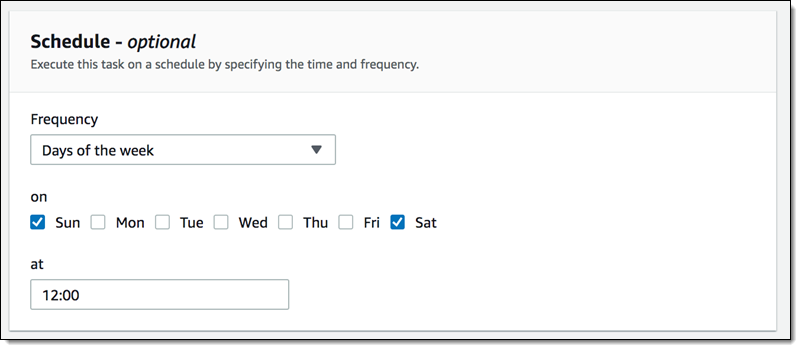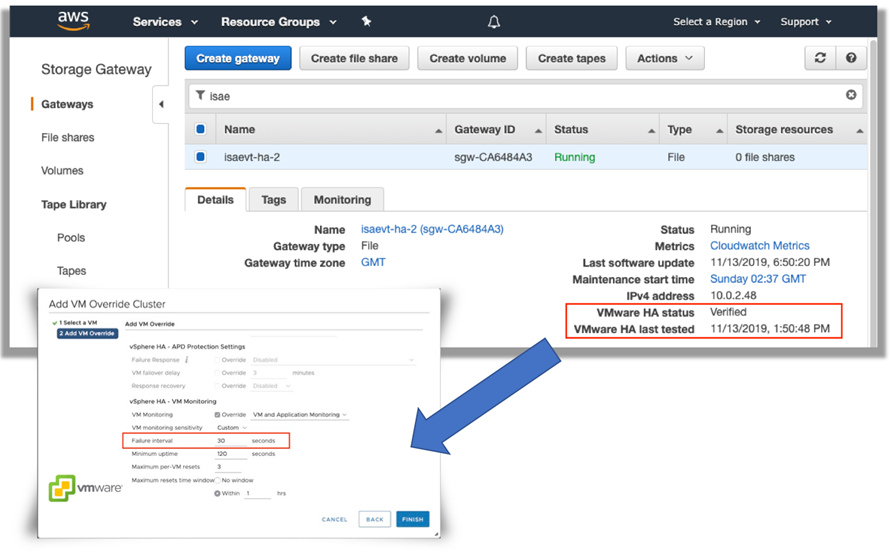AWS News Blog
Welcome to AWS Storage Day
|
|
 Everyone on the AWS team has been working non-stop to make sure that re:Invent 2019 is the biggest and best one yet. Way back in September, the entire team of AWS News Bloggers gathered in Seattle for a set of top-secret briefings. We listened to the teams, read their PRFAQs (Press Release + FAQ), and chose the launches that we wanted to work on. We’ve all been heads-down ever since, reading the docs, putting the services to work, writing drafts, and responding to feedback.
Everyone on the AWS team has been working non-stop to make sure that re:Invent 2019 is the biggest and best one yet. Way back in September, the entire team of AWS News Bloggers gathered in Seattle for a set of top-secret briefings. We listened to the teams, read their PRFAQs (Press Release + FAQ), and chose the launches that we wanted to work on. We’ve all been heads-down ever since, reading the docs, putting the services to work, writing drafts, and responding to feedback.
Heads-Up
Today, a week ahead of opening day, we are making the first round of announcements, all of them related to storage. We are doing this in order to spread out the launches a bit, and to give you some time to sign up for the appropriate re:Invent sessions. We’ve written individual posts for some of the announcements, and are covering the rest in summary form in this post.
Regardless of the AWS storage service that you use, I think you’ll find something interesting and useful here. We are launching significant new features for Amazon Elastic Block Store (Amazon EBS), Amazon FSx for Windows File Server, Amazon Elastic File System (Amazon EFS), AWS DataSync, AWS Storage Gateway, and Amazon Simple Storage Service (Amazon S3). As I never tire of saying, all of these features are available now and you can start using them today!
Let’s get into it…
Elastic Block Store (EBS)
The cool new Fast Snapshot Restore (FSR) feature enables the creation of fully-initialized, full-performance EBS volumes.
 Amazon FSx for Windows File Server
Amazon FSx for Windows File Server
This file system now includes a long list of enterprise-ready features, including remote management, native multi-AZ file systems, user quotas, and more! Several new features make this file system even more cost-effective, including data deduplication and support for smaller SSD file systems.
Elastic File System (EFS)
Amazon EFS is now available in all commercial AWS regions. Check out the EFS Pricing page for pricing in your region, or read my original post, Amazon Elastic File System – Production-Ready in Three Regions, to learn more.
AWS DataSync
AWS DataSync was launched at re:Invent 2018. It supports Automated and Accelerated Data Transfer, and can be used for migration, upload & process operations, and backup/DR.
Effective November 1, 2019, we are reducing the per-GB price for AWS DataSync from $0.04/GB to $0.0125/GB. For more information, check out the AWS DataSync Pricing page.
The new task scheduling feature allows you to periodically execute a task that detects changes and copies them from the source storage system to the destination, with options to run tasks on an hourly, daily, weekly, or custom basis:

We recently added support in the Europe (London), Europe (Paris), and Canada (Central) Regions. Today we are adding support in the Europe (Stockholm), Asia Pacific (Mumbai), South America (São Paulo), Asia Pacific (Hong Kong), and AWS GovCloud (US-East) Regions. As a result, AWS DataSync is now available in all commercial and GovCloud regions.
For more information, check out the AWS DataSync Storage Day post!
AWS Storage Gateway
AWS Storage Gateway is a hybrid cloud storage service that gives you on-premises access to virtually unlimited cloud storage. With this launch, you now have access to a new set of enterprise features:
High Availability – Storage Gateway now includes a range of health checks when running within a VMware vSphere High Availability (VMware HA) environment, and can now recover from most service interruptions in under 60 seconds. In the unlikely event that a recovery is necessary, sessions will be maintained and applications should continue to operate unaffected after a pause. The new gateway health checks integrate automatically with VMware through the VM heartbeat. You have the ability to adjust the sensitivity of the heartbeat from within VMware:

To learn more, read Deploy a Highly Available AWS Storage Gateway on a VMware vSphere Cluster.
Enhanced Metrics – If you enable Amazon CloudWatch Integration, AWS Storage Gateway now publishes cache utilization, access pattern, throughput, and I/O metrics to Amazon CloudWatch and makes them visible in the Monitoring tab for each gateway. To learn more, read Monitoring Gateways.
More Maintenance Options – You now have additional control over the software updates that are applied to each Storage Gateway. Mandatory security updates are always applied promptly, and you can control the schedule for feature updates. You have multiple options including day of the week and day of the month, with more coming soon. To learn more, read Managing Storage Gateway Updates.
Increased Performance – AWS Storage Gateway now delivers higher read performance when used as a Virtual Tape Library, and for reading data and listing directories when used as a File Gateway, providing you faster access to data managed through these gateways.
Amazon S3
We launched Same-Region Replication (SRR) in mid-September, giving you the ability to configure in-region replication based on bucket, prefix, or object tag. When an object is replicated using SRR, the metadata, Access Control Lists (ACLs), and objects tags associated with the object are also replicated. Once SRR has been configured on a source bucket, any changes to these elements will trigger a replication to the destination bucket. To learn more, read about S3 Replication.
Today we are launching a Service Level Agreement (SLA) for S3 Replication, along with the ability to monitor the status of each of your replication configurations. To learn more, read S3 Replication Update: Replication SLA, Metrics, and Events.
AWS Snowball Edge
This is, as I have already shared, a large-scale data migration and edge computing device with on-board compute and storage capabilities. We recently launched three free training courses that will help you to learn more about this unique and powerful device:
You may also enjoy reading about Data Migration Best Practices with AWS Snowball Edge.
— Jeff;
